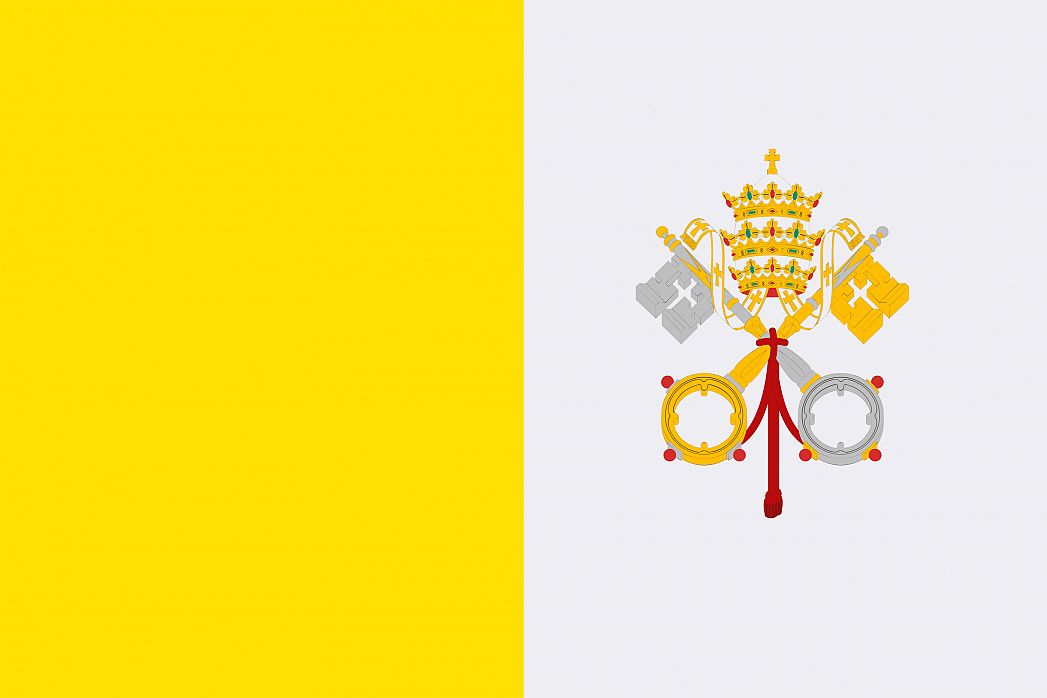The Vatican flag is square (ratio 1:1) and is made up of two bands of white and gold. The Vatican Coat of Arms is at the center of the white bar. The Coat of arms has two crossed keys of Saint Peter, each with a cross on the key wards, and a Papal Tiara. One key is silver and the other gold in color. A red cord ties both keys together at the center. Officially the Vatican flag is called “The Flag of the Holy See.” The Vatican adopted the flag on June 7, 1929, the same year Italy and Pope Pius XI signed the Lateran Treaty to create the independent state under the government of the Holy See.
The yellow (or gold) color represents the yellow cockade initially worn on the hats of the Vatican’s Noble Guards. Though the cockade was initially yellow and blue, the pope changed it to distinguish them from enemy army which wore red and yellow.
No one person is credited with designing the Vatican flag, but it is an adoption of the traditional colors of the Roman People and the Roman Senate. The present colors used on flags saw the light of day in 1808 when Pope Pius VII replaced the yellow and red cockade on the Noble Guard’s with white and yellow so that they were distinguished from Napoleon’s troops. From then, papal infantry started flying the flag until its official adoption in 1929.
Before the official adoption, the Papal States’ flag, which eventually became the current Vatican City flag, used different colors. Prior to 1803, the flag was square with only red and yellow colors. From 1803 to 1825, the states adopted a square pure white flag with the coat of arms at the center. From 1825 to 1870, the flag adopted its current form and arrangement but the keys in the coat of arms had fewer details. The crew of Apollo 11 took the flag to the moon and brought it back with some rocks as a present to the Vatican.
This page was last modified on May 1st, 2018
More on Graphicmaps

Published on 2019-11-06
What is a Trade Embargo?

Published on 2019-11-04
Which Two Countries Used to Have the Same Flag?

Published on 2019-09-16
What Is the Only Two-Sided State Flag?

Published on 2019-09-16
Which Country Flag Looks Like the Texas Flag?

Published on 2019-08-29
Flags That Resemble the US Flag

Published on 2019-08-20
